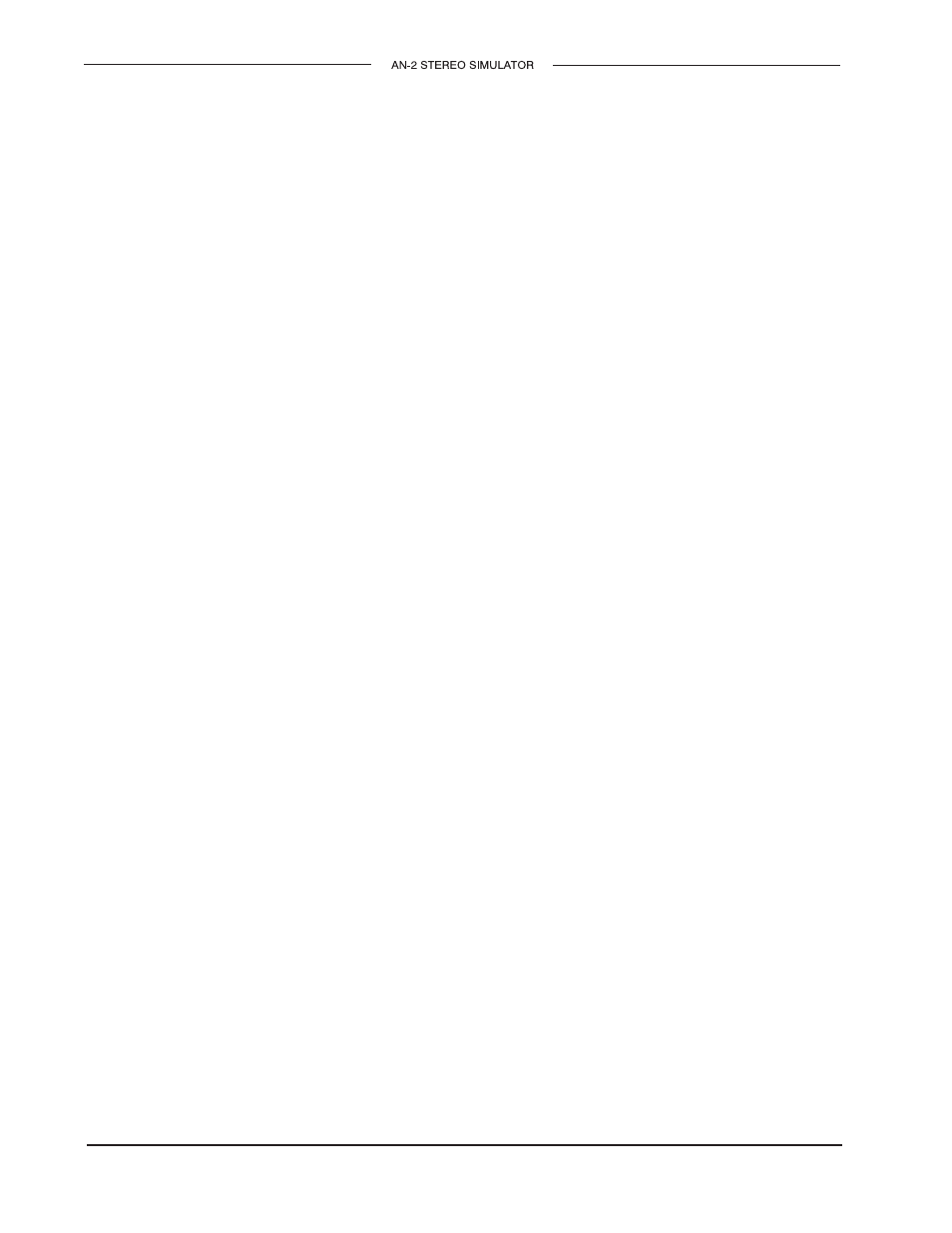Recording studio applications – Studio Technologies AN-2 User Manual
Page 6

Issue 3
AN-2 User Guide
Page 8
Studio Technologies, Inc.
to the peak-reading meter will give you the
best signal-to-noise ratio, while preventing
overload of critical circuitry.
The other four controls allow you to tailor
the stereo simulation to your tastes.
The Stereo Width control varies the number
of combs in each channel (refer to Figures
2 and 3). This changes the apparent spread
of the sound source. A single voice or
instrument should sound as if it originates
from a single point, while a group of voices
seems more natural when their sources are
apparently separate. Turning the control
fully clockwise increases this spreading
effect.
The peaks and dips in the frequency re-
sponse curves shown in Figures 2 and 3
may seem abnormal when compared to
other equipment. Keep in mind that the
effect you are seeking is a result of the
interaction of the direct signal and the signal
reflected from the walls of a room. The
curves shown in Figures 2 and 3 approxi-
mate this interaction.
The Stereo Depth control affects the depth
of the combs. When rotated to the mono
position (fully counterclockwise), the combs
have no depth at all, giving a flat frequency
response. Rotated to full stereo (clockwise),
the combs reach their maximum depth,
giving the maximum stereo effect.
This maximum effect may not be appropri-
ate for your program material. If your signal
has few pitch changes (a single speaking
voice, for example), the combs may be
audible. Setting the stereo depth control to
eleven o’clock will give a natural stereo
effect without audible comb filter effects.
More complex sources, such as a vocal
group or full orchestra, will benefit from the
enhanced depth resulting from turning the
stereo depth control more fully clockwise.
The Modulation ON/OFF switch enables
and disables the modulation section. In the
out (OFF) position the modulation depth
and rate controls do not affect the signal.
The modulation controls (depth and rate)
produce an instantaneous change in pitch
similar to vibrato. The rate control varies
the speed of these changes from a slow
“chorus” to a fast warble. The depth control
varies the amount of the effect.
The setting of the modulation depth control
is related to the settings of the stereo width
and stereo depth controls. When the stereo
width and depth controls are set to a low
position (counterclockwise), the modulation
depth control should be raised (clockwise),
and vice versa.
The settings of all the controls are closely
interrelated. The best way to learn how the
unit sounds, of course, is to experiment. For
example, a string section might be best
enhanced with the stereo width set at two
o’clock, a stereo depth setting of one
o’clock, modulation depth at three o’clock,
and a minimum setting of the modulation
rate control. The settings outlined in this
and preceding paragraphs will give you a
good starting point; your finished product
will depend largely on your imagination.
Recording Studio Applications
Although it may be placed almost anywhere
in the recording chain, for best results the
AN-2 should be between the source and the
final stereo mix.
When used with a typical console, the unit
should be fed from a track on the tape
recorder, or an unused cue or echo bus on